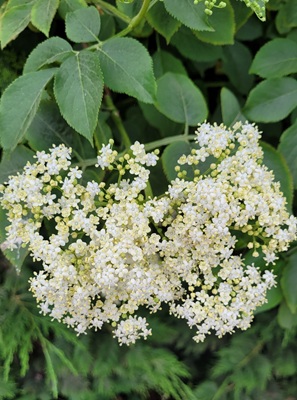Flower Properties
| Property | Value |
|---|---|
| English Name | Elder Flower |
| MainColor | White |
| PlantType | |
| Growth Type | |
| Season | May |
| ImageUrl | Sambucus-002 |
| Photographer | DP |
| Location | |
| Human Toxicity |
Flower Details
Description
A deciduous shrub or small tree with frothy clusters of creamy-white flowers in early summer, followed by dark purple-black berries in late summer and autumn. It grows abundantly in hedgerows and woodlands and has a long history of culinary and medicinal use.
Distribution
Native to Europe, including the UK, and widespread across the country.
Medicinal/Other Uses

Flowers are used to make elderflower cordial and teas, while berries are used in wines, syrups, and jams. Medicinally, elder has been used to treat colds, flu, and inflammation.
Edibility
Flowers and ripe berries are edible when cooked.
Human Toxicity

Unripe berries, leaves, and stems contain cyanogenic glycosides, which can cause nausea, vomiting, or diarrhea if consumed raw.
Pet Toxicity

Mildly toxic – leaves, stems, and unripe berries can cause gastrointestinal upset in pets.
Active Compounds
Anthocyanins, flavonoids, cyanogenic glycosides.
